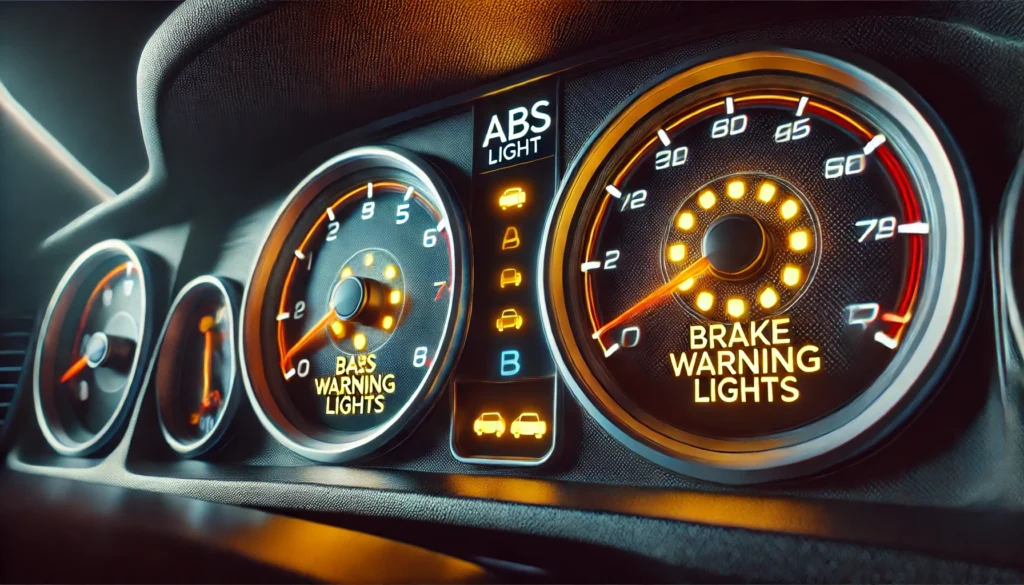Vehicle inspections are mandatory in many regions to ensure that vehicles meet safety and environmental standards. During these inspections, various aspects of the vehicle are checked, including the functionality of critical systems and warning lights. If the ABS (Anti-lock Braking System) or brake light is on, it can indicate a fault that may cause issues during the inspection. Understanding how these faults impact the inspection process and what you can do about them can help ensure your vehicle passes the inspection.
Understanding ABS and Brake Light Faults
The ABS light and brake light on your dashboard serve as important indicators of your vehicle’s braking system’s health:
- ABS Light:
- The ABS light indicates a problem with the Anti-lock Braking System, which helps prevent wheel lockup during hard braking and maintains steering control.
- Brake Light:
- The brake light signals issues within the braking system, such as low brake fluid, worn brake pads, or other malfunctions that could compromise braking performance.

Impact of ABS and Brake Light Faults on Vehicle Inspection
- Safety Concerns:
- Both ABS and brake light faults are considered serious safety concerns. During a vehicle inspection, these lights indicate that there is an unresolved issue within the braking system, which could affect the vehicle’s safety on the road. Inspectors will likely fail the vehicle if either of these lights is on.
- Diagnostic Trouble Codes (DTCs):
- Modern vehicle inspections often involve connecting an OBD-II scanner to the vehicle’s diagnostic port to check for any stored Diagnostic Trouble Codes (DTCs). If the ABS or brake light is on, the scanner will retrieve related codes, providing evidence of the faults. These codes must be cleared after resolving the underlying issues to pass the inspection.
- Comprehensive Vehicle Check:
- Inspections include a thorough check of the vehicle’s overall condition. Visible warning lights on the dashboard are a clear sign that the vehicle has unresolved issues. Even if the emissions and other systems are functioning correctly, unresolved brake system faults can result in a failed inspection.

Steps to Resolve ABS and Brake Light Faults Before Inspection
- Diagnose the Issue:
- Use an OBD-II scanner to read the error codes related to the ABS and brake lights. These codes will help identify the specific problems within the braking system.
- Inspect and Repair:
- ABS Light:
- Check the ABS sensors, wiring, and control module. Clean or replace faulty sensors and repair any damaged wiring. If the control module is faulty, it may need replacement or reprogramming.
- Brake Light:
- Inspect the brake fluid level, brake pads, rotors, and other components for wear or damage. Replace worn brake pads, top up brake fluid, and repair any leaks or faults.
- ABS Light:
- Reset Warning Lights:
- After addressing the underlying issues, use the OBD-II scanner to reset the ABS and brake lights. Ensure the problems are fully resolved and the lights do not come back on.
- Conduct a Pre-Inspection Check:
- Have a mechanic perform a thorough check of your vehicle before the official inspection to ensure all systems, including the brakes, are functioning correctly.
Conclusion
ABS and brake light faults can cause significant issues during a vehicle inspection due to their impact on safety. These warning lights indicate unresolved problems within the braking system that must be addressed to pass the inspection. By diagnosing and repairing the faults before the inspection, you can ensure your vehicle meets safety standards and passes the inspection smoothly.